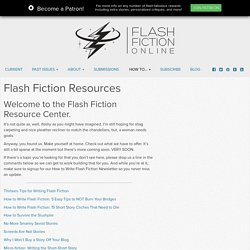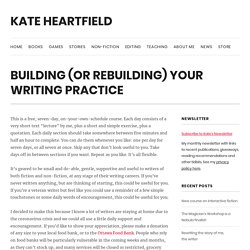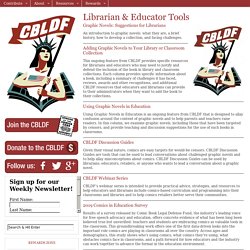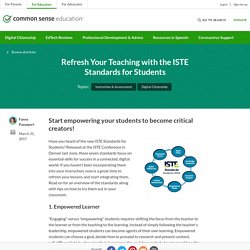

Poets.org. Poetry Lesson Plans. Lessons Worth Sharing. NaNo Prep 101 Course Final. The Surprising Benefits of Student-Created Graphic Novels. Flash Fiction Resources - Flash Fiction Online. It’s not quite as, well, flashy as you might have imagined.

I’m still hoping for shag carpeting and nice pleather recliner to match the chandeliers, but, a woman needs goals. Anyway, you found us. Make yourself at home. Check out what we have to offer. It’s still a bit sparse at the moment but there’s more coming soon. If there’s a topic you’re looking for that you don’t see here, please drop us a line in the comments below so we can get to work building that for you. Building (or Rebuilding) Your Writing Practice – Kate Heartfield. This is a free, seven-day, on-your-own-schedule course.

Each day consists of a very short text “lecture” by me, plus a short and simple exercise, plus a quotation. Each daily section should take somewhere between five minutes and half an hour to complete. You can do them whenever you like: one per day for seven days, or all seven at once. Skip any that don’t look useful to you. Take days off in between sections if you want. It’s geared to be small and do-able, gentle, supportive and useful to writers of both fiction and non-fiction, at any stage of their writing careers. I decided to make this because I know a lot of writers are staying at home due to the coronavirus crisis and we could all use a little daily support and encouragement. Here are the seven course sections.
This work is licensed under a Creative Commons Attribution-NonCommercial 4.0 International License. Like this: Like Loading... Tips for Beginners Archives - SFWA. NaNoWriMo’s Young Writers Program. Creative Writing at the Library. As part of our ALSC mentorship, AnnMarie Hurtado from the Pasadena Public Library and I, an MLIS student at San Jose State University’s iSchool, created a survey about the use of creative writing programs, specifically for children, in public libraries.

Both of us write as a passion, and I used to attend creative writing programs at my local library both as a child and teen, so we were both curious as to how public libraries encourage writing—especially now that many libraries are (rightfully) moving full STEAM ahead. Our main interest was in the kind of creative writing programs libraries held, and what the goals of those programs were—were they more educational, or designed for attendees to flex their creativity? Were they run by staff members, or did they give kids the chance to talk to real live authors? Whatever the intended age group of the programs, their main goal was overwhelmingly to give attendees the chance to experiment. Some of the resources listed were: Library Journal. Librarian & Educator Tools.
Graphic Novels: Suggestions for Librarians An introduction to graphic novels: what they are, a brief history, how to develop a collection, and facing challenges.

Adding Graphic Novels to Your Library or Classroom Collection This ongoing feature from CBLDF provides specific resources for librarians and educators who may need to justify and defend the inclusion of the book in library and classroom collections. Each column provides specific information about a book, including a summary of challenges it has faced, reviews, awards and other recognitions, and additional CBLDF resources that educators and librarians can provide to their administrators when they want to add the book to their collections. Using Graphic Novels in Education Using Graphic Novels in Education is an ongoing feature from CBLDF that is designed to allay confusion around the content of graphic novels and to help parents and teachers raise readers.
CBLDF Discussion Guides CBLDF Webinar Series 2019 Comics in Education Survey. Strategize: Great Ideas for Library Writing Programs. Lecture #8: Worldbuilding Q&A — Brandon Sanderson on Writing Science Fiction and Fantasy. Refresh Your Teaching with the ISTE Standards for Students. Have you heard of the new ISTE Standards for Students?

Released at the ISTE Conference in Denver last June, these seven standards focus on essential skills for success in a connected, digital world. If you haven't been incorporating them into your instruction, now is a great time to refresh your lessons and start integrating them. Read on for an overview of the standards along with tips on how to try them out in your classroom. 1. Empowered Learner "Engaging" versus "empowering" students requires shifting the focus from the teacher to the learner or from the teaching to the learning.
Try it. 2. Before our students can take ownership of this skill, the school has to adopt a digital citizenship curriculum to teach students safe and responsible technology use. Try it. 3. Don't consume -- create! Try it. 4. Teachers are often under a lot of pressure to be the sole designers of learning experiences. Try it.